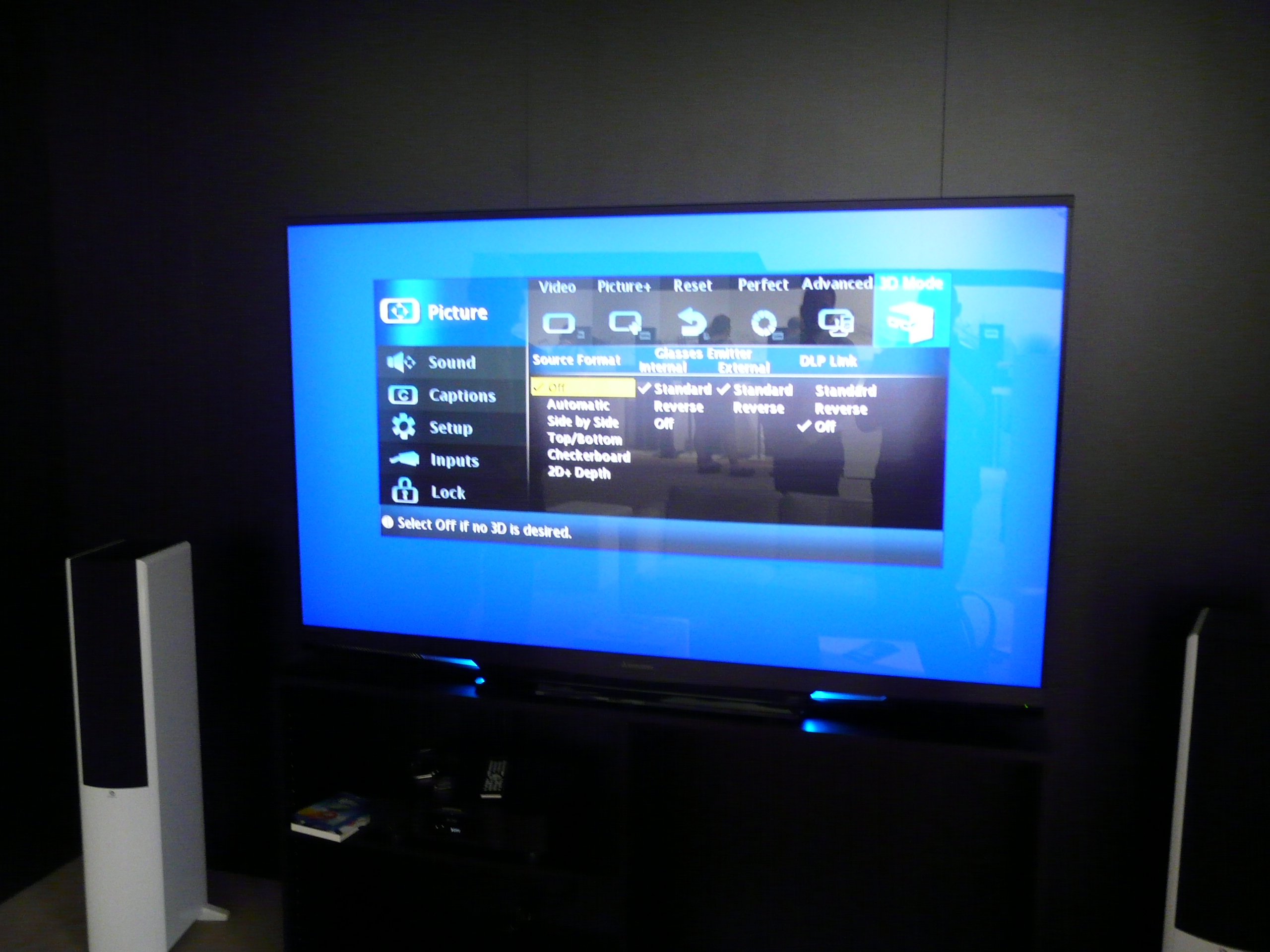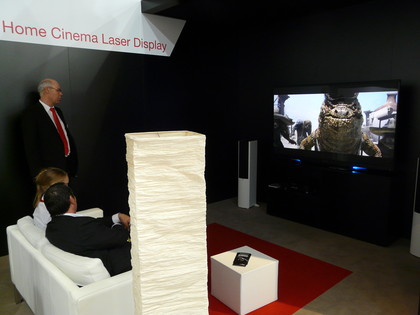First look: Mitsubishi Home Cinema Laser Display
Mitsubishi's 'laser light engine' display leaves us beaming

Would you pay £4,000+ for the best TV ever? Mitsubishi is hoping so, but just can't make up its mind whether to launch its Home Cinema Laser Display in Europe. We do hope it does.
Our extended demo with this very special display proved one thing: rear projection TVs are brilliant, and - thanks to lasers - approaching a position where the achievable size and, crucially, picture quality advantages over both plasma and LCD (and that includes LED backlit variants) are significant enough to attract the high rollers after a slice movie perfection.
We knew this would happen. Just a few years ago the last rear-pro TVs disappeared almost entirely because we, as a nation, thought they were too chubby.
And, if we're honest, they very well still might be. The Laser TV Mitsubishi had on show in Berlin was basically the same as the 75-incher it sells in the Japan and the US, and during our demo a lot of folk first stood in awe of the picture before diving behind it to measure-up its girth.
Some came away shaking their heads - it reaches around 32 cm - though no one after a home cinema screen for a spare room or loft should care a jot about that.

This is a product that should be seen as a 24-hour alternative to a home cinema projector and screen (the latter of which has roughly the footprint as the L75-A94), and in that little battle it does well.
Mitsubishi's laser display also has some novel design attributes, not least of which is a slim bezel that measures little over a centimetre on its sides.
Sign up for breaking news, reviews, opinion, top tech deals, and more.
Easy on the eye
Mitsubishi's demo, which was more about gauging the reaction of consumers that it was a bona fide launch (that should come in 2012), proved one thing to us; laser light is impeccably easy on the eye. After a hard slog around the 3D-dominated IFA halls, watching the L75-A94 was a delight.
And that was despite some frenetic, pacey video featuring lots of fast-moving sequences supplied in 2D by a Marantz Blu-ray player. All scenes were rendered without a hint of blur, flicker, image lag or stepping.
This extraordinary fluidity isn't the only advantage of lasers. Detail is as high as on any high-end projection, while colour is very natural and never over-cooked. Contrast in a 2D image isn't overwhelmingly good, but neither is it a problem.

Put into 3D mode - and that's active shutter we're talking about here - the L75-A94 must be slipped into either the Brilliant or Super Brilliant brightness boost modes, largely to make up for the light the 3D specs take away. The results are decent, though watching action sequences and fast-moving objects wasn't nearly as pleasant as watching the L75-A94 display 2D hi-def footage from Blu-ray.
During our test it wasn't possible to see the 2D-3D conversion, though we seriously doubt we missed anything special on this 70kg screen. If it ever gets launched in the UK, it could be a real home cinema heavyweight.

Jamie is a freelance tech, travel and space journalist based in the UK. He’s been writing regularly for Techradar since it was launched in 2008 and also writes regularly for Forbes, The Telegraph, the South China Morning Post, Sky & Telescope and the Sky At Night magazine as well as other Future titles T3, Digital Camera World, All About Space and Space.com. He also edits two of his own websites, TravGear.com and WhenIsTheNextEclipse.com that reflect his obsession with travel gear and solar eclipse travel. He is the author of A Stargazing Program For Beginners (Springer, 2015),